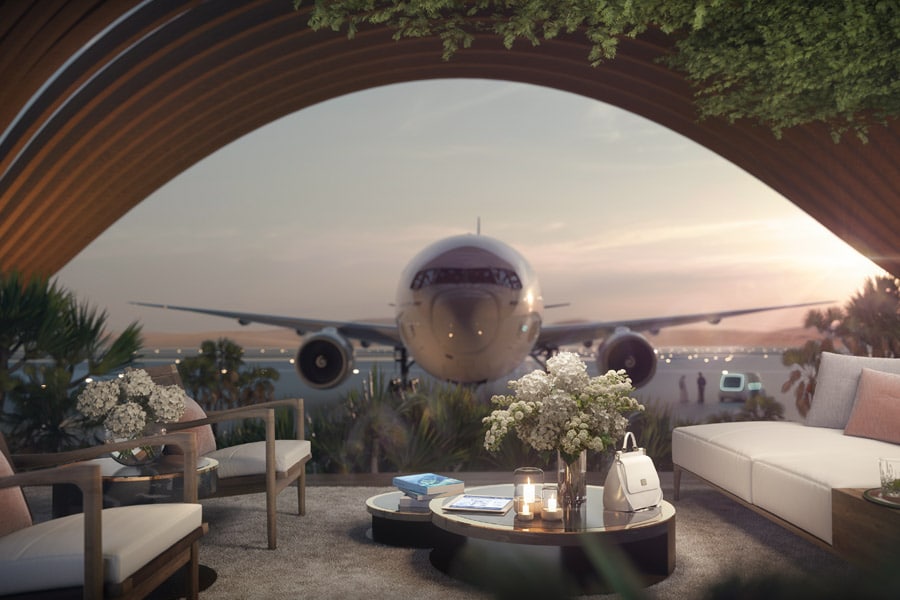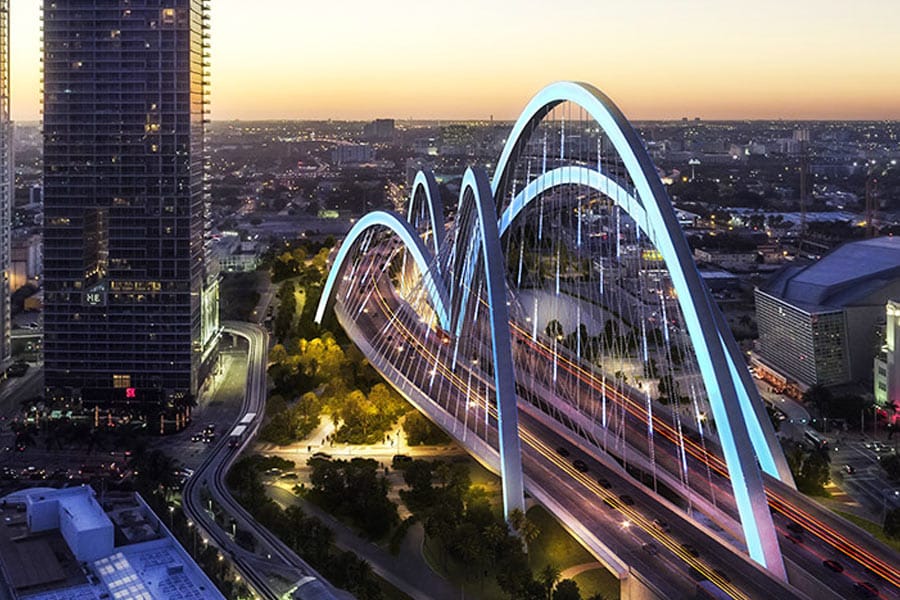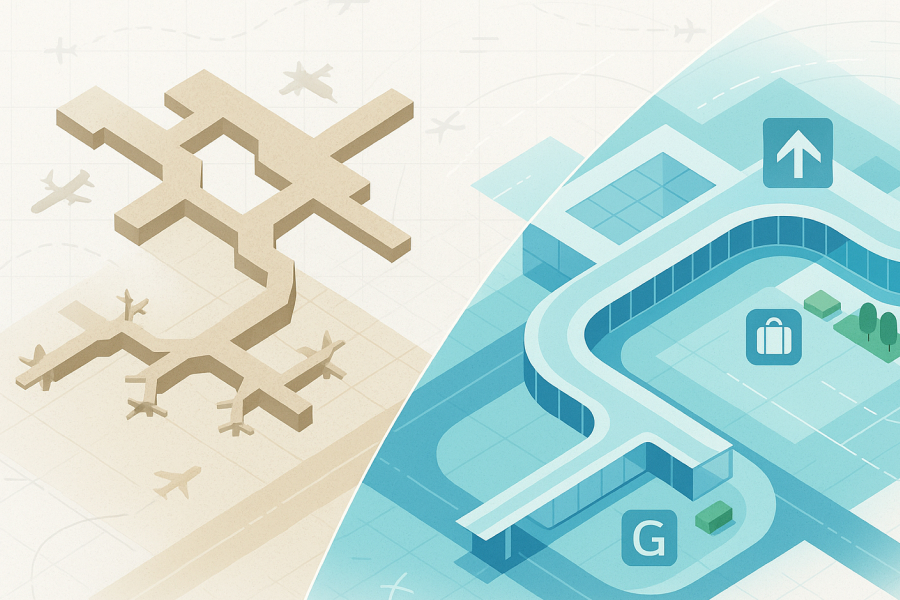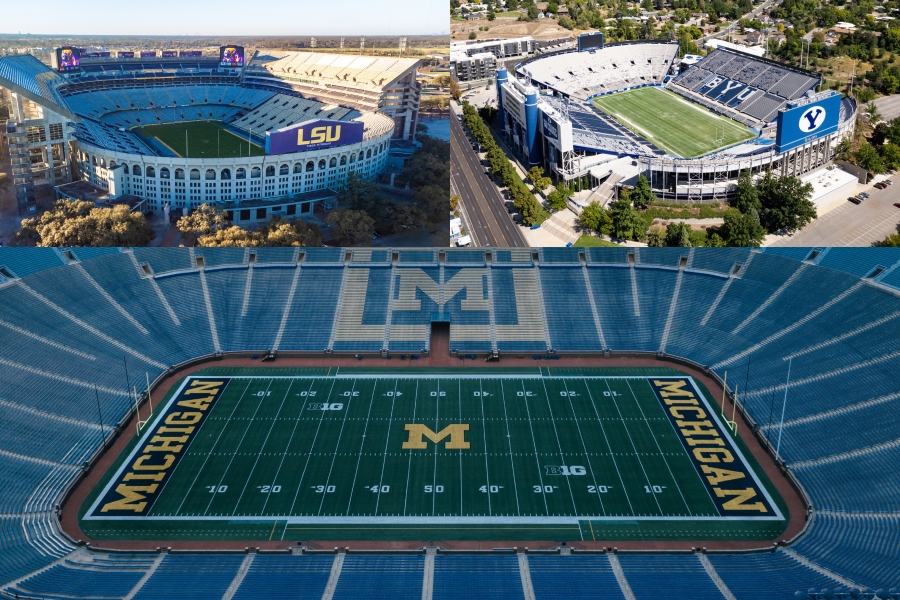In 2019, world-renowned architects Foster + Partners won the contract to design the airport for The Red Sea Project, a luxury travel destination on the west coast of Saudi Arabia. Set for completion in 2022, the Red Sea International Airport aims to deliver a “luxury ecotourism experience.”
The airport is expected to serve up to 1 million visitors annually by 2030, with a peak capacity of 900 passengers per hour. It aims to serve as tourists’ initial welcome to The Red Sea Project resort, which will be composed of a luxury marina, entertainment and leisure facilities, 50 hotels and 1,300 residential properties across 22 islands and six inland sites.
The airport will be accessible by 80% of the world’s population in fewer than eight hours of travel. The designs by Foster + Partners showcase five massive dune-like pods, inspired by the colors and textures of the desert landscape. The pods will serve as departure lounges and are arranged around a central drop-off and pick-up space.
Each pod will have its own spas and restaurants and can act as a “mini-terminal,” allowing other parts of the airport to shut down during low demand to reduce energy usage. Lush local greenery will inhabit the spaces between the pods, welcoming guests to the first stage of the arrivals process.
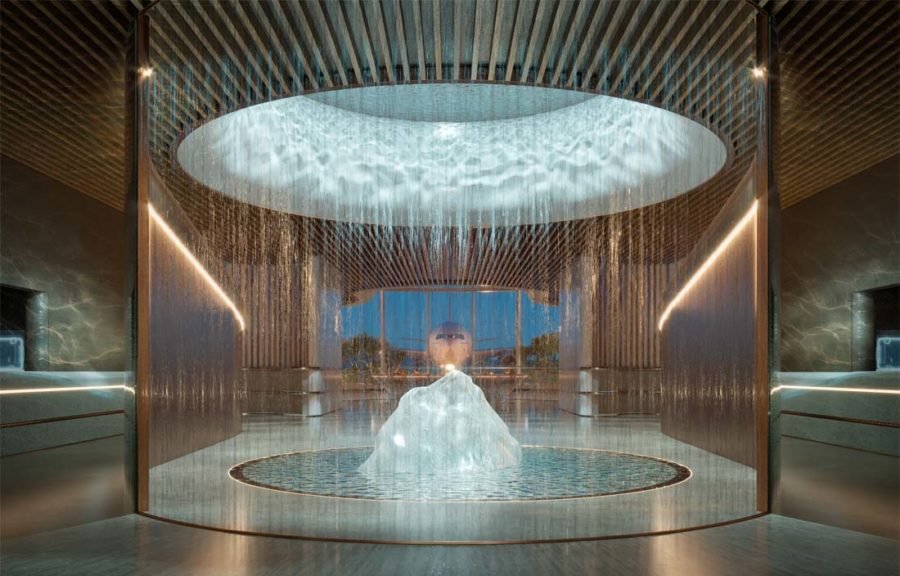
The airport experience aims to be as luxurious as the resort. The smaller terminal designs are intended to provide the feel of being in a terminal used by private aircrafts, including intimate sitting and dining areas.
The resort experience will begin once the traveler lands, as the passengers are ushered off the plane and through a lush oasis landscape that leads to the welcome center. Here they are met and welcomed to the resort before being helped through immigration checks. The welcome center aims to provide a flavor of the resort itself, by reviewing the highlights of the resort and what visitors can expect. Guests will be ushered to and from the airport in electric vehicles.
Shade and building configuration play into the airport’s overall aim of sustainability. The terminal’s rooftop shells will extend from the structure to shade both the landside and airside directions. The building’s glazing faces north, allowing for increased daylight without compromising solar efficiency.
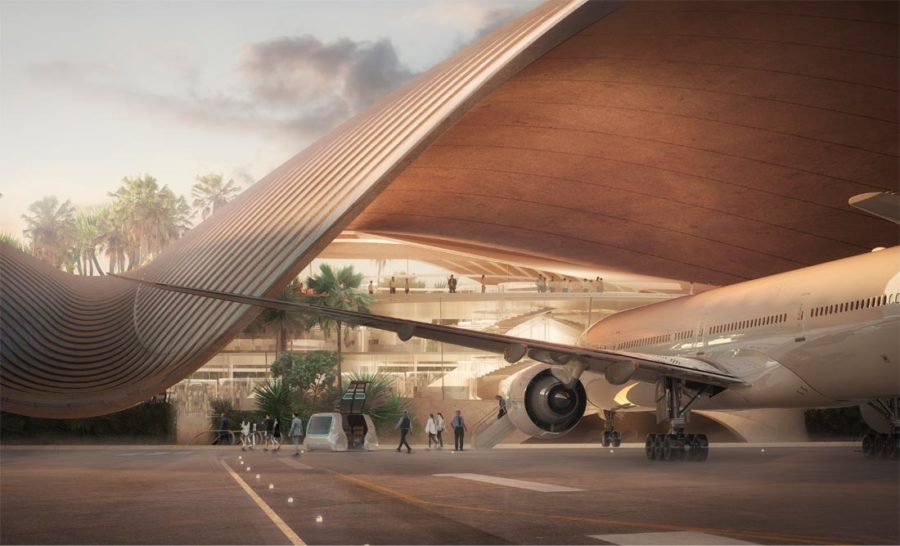
“The Red Sea Airport is oriented toward the north, which allows for uninterrupted views to the aircraft hangars without direct sun hitting the façade,” Gerard Evenden, head of studio at Foster + Partners, said in a recent magazine interview. “This is further reinforced with a series of large cantilevering shells, which protect the building.”
The airport’s ancillary spaces, including hangars and baggage facilities, will be housed in two wings extending from either side of the main terminal. This configuration lowers overall energy demand as compared to standalone buildings.
The luxury ecotourism
With a goal of setting new standards in sustainable development across planning, construction and operation, the Red Sea International Airport will aim to run on 100% renewable energy, enforce a complete ban on single use plastics and have overall 100% net neutrality.
As part of Phase 1 of The Red Sea Project, the airport is already under construction and is being built 15 kilometers inland from the coast of the Red Sea. The overall project has already secured the first stage of LEED platinum certification for its plans and designs. This internationally recognized sustainability rating system awards certification for leadership in energy and environmental design.
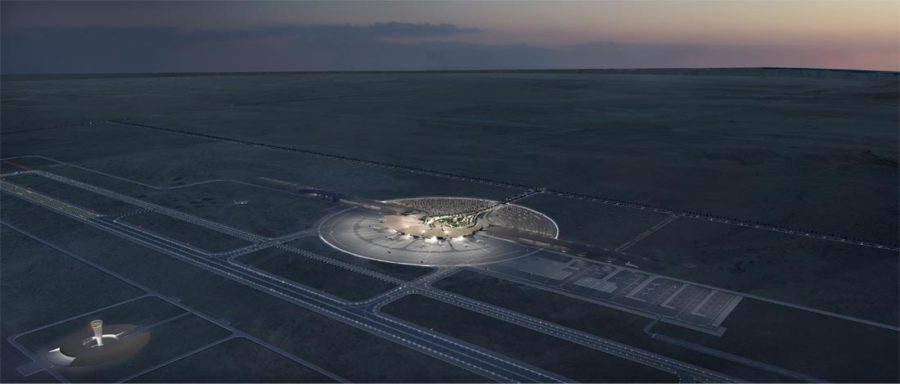
In January 2021, daa International was appointed to manage the project’s operations. “The Red Sea International Airport will become a fundamental part of each visitor’s journey to this unique destination, and we believe their holiday experience should start from the moment they land,” said daa International CEO Nick Cole in a press release.
Enabling sustainable development
As environmental regulations continue to play a major role in construction, developers are scrambling to find solutions moving forward while preserving the ecosystem surrounding their project. The Red Sea Development Co., the project’s developer, has gone to great lengths to protect the pristine environment surrounding its project, which includes islands and marine life, as well as mountain canyons, dormant volcanoes and historical and cultural sites.
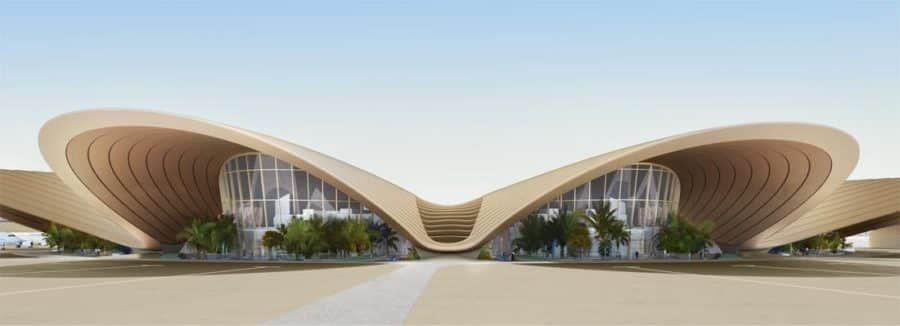
The project began with a massive marine spatial planning simulation to assess the developmental impact of the project and enhance the biodiversity of the environment. While 22 islands will be developed, 75% will remain untouched and nine will be protected as special conservation zones.
The Red Sea Development Co. said its aim is to set new standards in sustainable development. It says it will use smart technology to monitor the environmental impact of operations, avoid over-tourism and provide travelers with a seamless and personalized experience. It says it is also committed to delivering a 30% net conservation benefit by 2040. To do so, the company says it is creating the world’s largest battery storage facility, which will power the site (and islands) by renewable energy 24 hours a day.

